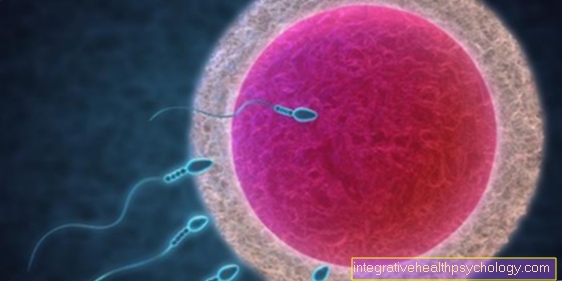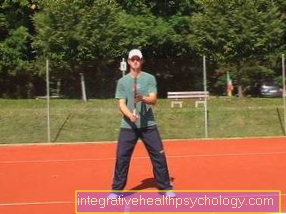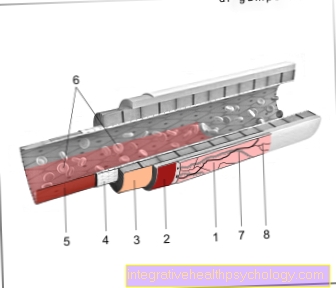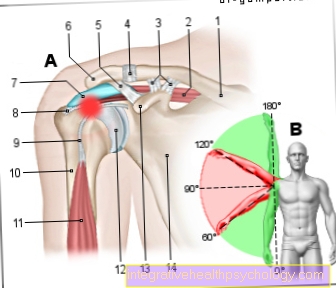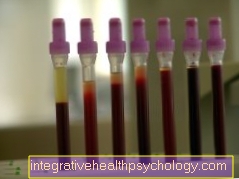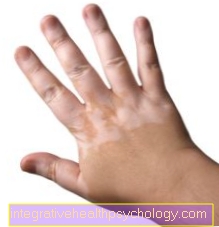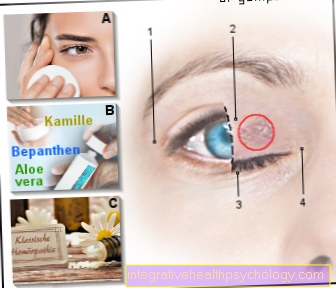Facial blindness
What is Facial Blindness?
Facial blindness, known in medicine as prosopagnosia, describes the inability to recognize familiar faces.
Friends, acquaintances and even family members are not recognized by their facial features, as is usually the case, but by other features such as voice, hairstyle, movements and so on.
In most cases, facial blindness is congenital. It is primarily a genetic defect that can occur alone or as part of an underlying disease.
Damage to the brain, such as after a traumatic brain injury or a stroke, the cause of facial blindness.
With a frequency of 2.5%, prosopagnosia is not that rare.

Causes of Facial Blindness
The cause of facial blindness is a faulty connection in the part of the brain that links the sensory perception of seeing with other areas of the brain. Thus, the impressions that the patient sees cannot be correctly interpreted, and the faces of the known people are seen but not recognized.
It is therefore not a psychological disorder as it is e.g. can occur after a trauma, but simply to a mediation defect in the brain.
Is facial blindness a subtype of autism or Asperger's syndrome?
In the congenital form, facial blindness is noticeable in that the children do not maintain eye contact and do not immediately recognize people they know. There is therefore often a suspicion of an autistic disease.
The emotional and social skills are not influenced by the facial blindness and it is therefore not a sub-form of autism.
It becomes more difficult to distinguish with some autistic patients who perceive people in their environment as objects and in whom the emotional connection in the brain is disturbed when looking at these people. Even then, these patients find it difficult to recognize other people by their faces.
However, this is not due to the fault in the interconnection of sensory perception, which is the cause of facial blindness, but rather to the disturbed emotional connection in the context of the autistic disease.
Facial blindness is therefore something completely different from autism or Asperger's syndrome, but can initially express itself in a similar way.
This could also be of interest to you: Autism - Diagnosis and Therapy
How is facial blindness diagnosed?
If the lack of eye contact and the problems with recognition are already particularly pronounced in childhood, a medical and psychiatric evaluation is carried out based on the parallels mentioned with autism.
If the children show normal emotional and social development, autism can be ruled out and the diagnosis of facial blindness is made after other causes have been clarified.
If the children are not particularly noticeable, however, they can usually compensate for their handicap well and the facial blindness may never be officially diagnosed.
What tests for facial blindness are there?
The so-called prosopagnosia (Facial blindness) to test is often difficult. The diagnosis is also not made on the basis of a standardized test, but rather by the attending physician's assessment of the person's symptoms and limitations.
However, there is definitely a need for such a test, since facial blindness is also rather unknown among doctors and is often misdiagnosed as an autistic disorder, especially in children.
Research is therefore developing questionnaires and image tests that are intended to clearly differentiate prosopagnosia from psychiatric diseases such as autism.
In these procedures, for example, the patient is shown the faces of famous personalities or close relatives on the computer, which they recognize and are supposed to describe the recognized features. Facial blind people have a hard time doing this and concentrate more on features such as hair or head position rather than the actual face.
Unfortunately, such series of images are not always meaningful, as celebrities in particular are recognized due to their distinctive features despite being blinded.
More precise results are provided by pictures of unknown people in whom the hairline, neck and rest of the body have been cut away and only the face can be seen.
These photos are shown to the test persons several times and they should react when they recognize a face. Face-blind people find it very difficult to do this and can only distinguish between people who, for example, have a different skin color or a different gender. These images of visually blind people cannot be distinguished from one another based on the facial features alone.
Such purely visual tests must, however, always be supplemented by an expert discussion in which a doctor familiar with the clinical picture analyzes typical everyday situations, since other causes for the problem with facial recognition must be ruled out.
Thus e.g. the clarification of poor eyesight or other perception disorders with the testing. Because people with prosopagnosia can fully perceive and also describe the facial features of their fellow human beings, but they cannot assign an identity and thus cannot recognize them.
Concomitant symptoms
If the face blindness exists from birth, as is the case with most of those affected, you usually do not even notice the person's handicap because they do not show any real symptoms.
However, face-blind people often suffer from a certain social insecurity and feel uncomfortable in large crowds because they do not recognize people they know right away, which can lead to embarrassing situations.
For example, they often walk past friends and acquaintances without greeting them because they simply did not recognize them. As a result, they can appear unfriendly by mistake.
As a result, especially in childhood, face-blind people are more often victims of exclusion and find it harder to connect with their peers. In the worst case, this can have a negative impact on the child's social development.
Apart from such social difficulties, people with prosopagnosia have no further restrictions, since congenital facial blindness has nothing to do with psychiatric or neurological disorders. Your perception, ability to concentrate and intelligence are therefore completely normal.
Can facial blindness be treated at all?
Facial blindness is not a real disease, nor is it curable. In the vast majority of cases, those affected have compensated for their handicap well over the years and may not know anything about their condition. So if there are no restrictions due to facial blindness, it does not need to be treated.
If those affected have problems in everyday life, they can learn to identify friends and acquaintances using other characteristics, such as recognizing their voice. Such strategies can be learned and trained if the person concerned has not already done so subconsciously. If the person comes to the doctor with their problems, these face-independent recognition strategies would be trained therapeutically.
In the case of the rare acquired facial blindness, the trigger of which is, for example, a craniocerebral trauma or a stroke and the disorder can clearly be attributed to damage to the relevant brain regions, there is usually no proper therapy.
In these cases, the exact cause is known, but in addition to facial blindness, those affected usually have more serious complaints that need to be treated sooner.
forecast
There is no cure for facial blindness, but it remains stable for life and does not usually worsen. By means of individual compensation strategies, most of those affected have a completely normal life and are hardly restricted by their disorder. Prosopagnosia is only diagnosed in the rarest of cases.
Only patients who have only acquired facial blindness in the course of an accident or illness and can suddenly no longer recognize close relatives and relatives have real problems with this.
These people find it much more difficult to learn the compensation strategies afterwards and the quality of life can be severely restricted as a result. Fortunately, these cases are very rare.
Recommendations from the editorial team
These topics could also be of interest to you:
- Neocortex
- Visual center
- Autism Tests - Which Are There?






